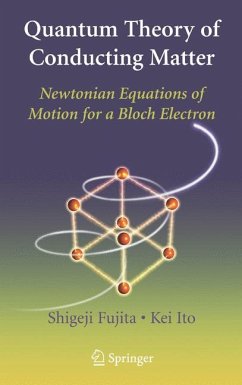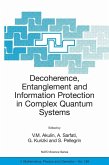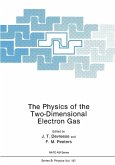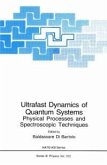Quantum Theory of Conducting Matter: Newtonian Equations of Motion for a Bloch Electron targets scientists, researchers and graduate-level students focused on experimentation in the fields of physics, chemistry, electrical engineering, and material sciences. It is important that the reader have an understanding of dynamics, quantum mechanics, thermodynamics, statistical mechanics, electromagnetism and solid-state physics. Many worked-out problems are included in the book to aid the reader's comprehension of the subject.
The Bloch electron (wave packet) moves by following the Newtonian equation of motion. Under an applied magnetic field B the electron circulates around the field B counterclockwise or clockwise depending on the curvature of the Fermi surface. The signs of the Hall coefficient and the Seebeck coefficient are known to give the sign of the major carrier charge. For alkali metals, both are negative, indicating that the carriers are "electrons." These features arise from the Fermi surface difference. The authors show an important connection between the conduction electrons and the Fermi surface in an elementary manner in the text. No currently available text explains this connection. The authors do this by deriving Newtonian equations of motion for the Bloch electron and diagonalizing the inverse mass (symmetric) tensor.
The currently active areas of research, high-temperature superconductivity and Quantum Hall Effect, are important subjects in the conducting matter physics, and the authors plan to follow up this book with a second, more advanced book on superconductivity and the Quantum Hall Effect.
The Bloch electron (wave packet) moves by following the Newtonian equation of motion. Under an applied magnetic field B the electron circulates around the field B counterclockwise or clockwise depending on the curvature of the Fermi surface. The signs of the Hall coefficient and the Seebeck coefficient are known to give the sign of the major carrier charge. For alkali metals, both are negative, indicating that the carriers are "electrons." These features arise from the Fermi surface difference. The authors show an important connection between the conduction electrons and the Fermi surface in an elementary manner in the text. No currently available text explains this connection. The authors do this by deriving Newtonian equations of motion for the Bloch electron and diagonalizing the inverse mass (symmetric) tensor.
The currently active areas of research, high-temperature superconductivity and Quantum Hall Effect, are important subjects in the conducting matter physics, and the authors plan to follow up this book with a second, more advanced book on superconductivity and the Quantum Hall Effect.
Dieser Download kann aus rechtlichen Gründen nur mit Rechnungsadresse in A, B, BG, CY, CZ, D, DK, EW, E, FIN, F, GR, HR, H, IRL, I, LT, L, LR, M, NL, PL, P, R, S, SLO, SK ausgeliefert werden.
From the reviews:
"This book, basing on a quantum statistical mechanical point of view, develops the pairon theory of superconductivity. ... In total, this comprehensive monograph ... presents a very well textbook on superconductivity theories. ... The methodical advantage of the book is that ... problems of the text are used as tasks for a self-verification and self-training. ... will be very useful for students and also for their teachers specializing into Physics of Condensed Media and related directions." (I. A. Parinov, Zentralblatt MATH, Vol. 1174, 2009)
"Textbook reviews the physics of superconductivity and other superfluid phenomena which occur when matter organizes itself in a totally different way than it is expected to behave. ... This nice manual is intended for Ph.D. students working in condensed matter physics who want to have a global yet detailed and condensed view of these collective effects. The chapters ... contain the essential material to understand the technical aspects of the second quantization method and eigenvalue problems for determining the ground states of these collective effects." (Jean-Yves Fortin, Mathematical Reviews, Issue 2011 k)
"This book, basing on a quantum statistical mechanical point of view, develops the pairon theory of superconductivity. ... In total, this comprehensive monograph ... presents a very well textbook on superconductivity theories. ... The methodical advantage of the book is that ... problems of the text are used as tasks for a self-verification and self-training. ... will be very useful for students and also for their teachers specializing into Physics of Condensed Media and related directions." (I. A. Parinov, Zentralblatt MATH, Vol. 1174, 2009)
"Textbook reviews the physics of superconductivity and other superfluid phenomena which occur when matter organizes itself in a totally different way than it is expected to behave. ... This nice manual is intended for Ph.D. students working in condensed matter physics who want to have a global yet detailed and condensed view of these collective effects. The chapters ... contain the essential material to understand the technical aspects of the second quantization method and eigenvalue problems for determining the ground states of these collective effects." (Jean-Yves Fortin, Mathematical Reviews, Issue 2011 k)









